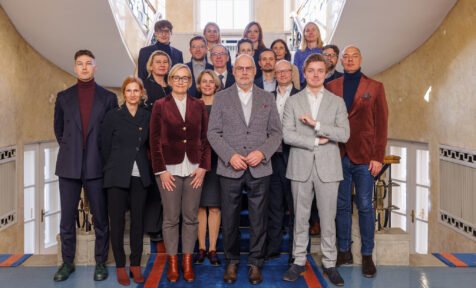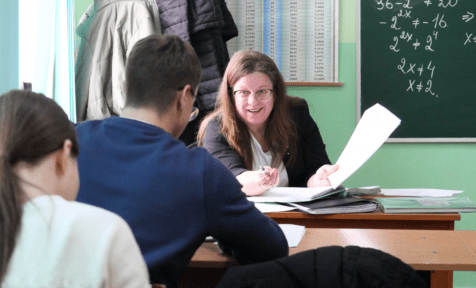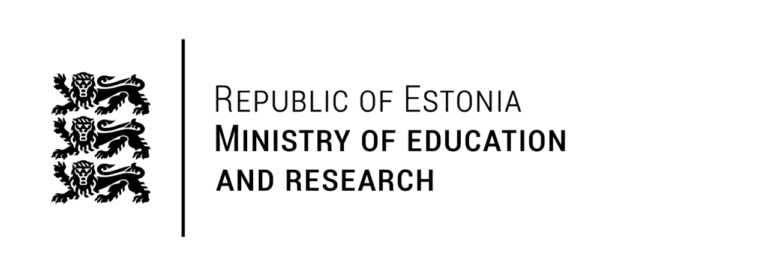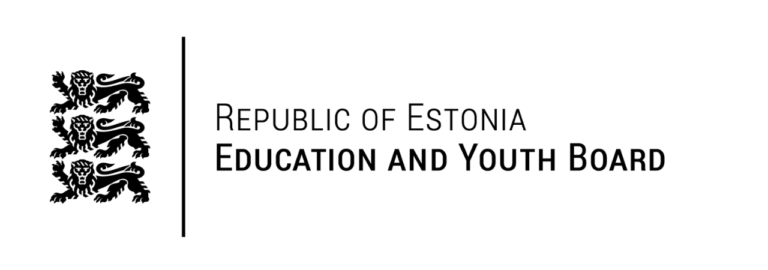The Minister of Education and Research Mailis Reps said that the new school year will begin as normal as possible, but prevention measures are crucial due to the spread of COVID-19. Digital transformation has become a focal point of school life and educational institutions need to maintain and develop distance learning capabilities throughout the school year in order to be prepared for smooth transition to distance learning and teaching, if necessary.
Mailis Reps thanked students, teachers, youth workers and parents for doing well in this spring. “It depends on our behaviour how unusual autumn will follow,” noted Mailis Reps. “In any case, the Government aims to avoid ordering educational institutions for full distance learning and teaching. Transition will occur case by case in a given building, institution or area, if needed.”
Every educational institution and its manager will plan how to mitigate risks while bearing in mind that in class learning and teaching must be provided to grades 1 to 6 and students with special needs as long as possible. Reducing physical contacts in schools is with critical importance. It is recommended to organize events dispersed and in smaller groups. International events and travel should be postponed.
Reps noted that Estonia was doing so well in spring thanks to a wisely laid foundation – the availability of smart devices, good digital skills and competences, developed digital infrastructure and the availability of digital learning materials. The importance of digital learning materials is growing with more than 200 digital learning materials and textbooks currently available for free of charge for basic school students. There are newly developed digital learning materials for students studying according to the simplified curriculum. In addition, the development of digital solutions for learning Estonian language will continue and the usage of the e-courses is growing.
Spring demonstrated the importance of researchers for better understanding and mitigating the outcomes of COVID-19 and the related crisis. The Governments has invested additional 10 million euros in research and development activities. The Ministry has asked Tallinn University to analyse how Estonian schools, students, teachers and parents coped distance learning during the state of emergency in spring. A COVID-19 prevention app HOIA has released (www.hoia.me).
In vocational education, the development of micro-degrees will begin starting with metal industry and construction. The aim is to develop short skill-specific learning modules which result in a certificate and opportunity to start working. Those can be taken into account for further studies.
Other highlights
Half a billion euros for implementing strategic objectives. Four thematic strategic development plans are under way for years 2021-2035. Up to half a billion euros is plan to achieve set goals.
The popularity of teaching profession is on a rise. This year, record breaking number of 3879 applications were submitted to Tartu and Tallinn universities for becoming a teacher. In Estonia, the professionality of teaching profession and high-quality standard or teaching relies on responsibility and autonomy. Teachers have high degree of discretion over their professional choices, including teaching materials and grading.
The Government supports the development leap of language technology. Its capabilities enable quick dissemination of information to everyone in Estonia. The state of emergency in spring demonstrated the need for this. The machine translation software will be ready by the end of next year and helps to translate websites, different documents and large amounts of text. The software will be multilingual: Estonian-English-Estonian, Estonian-Russian-Estonian and Estonian-German-Estonian. An integrated voice technology allows automatic writing and translation of spoken text. The software also enables Estonian-language support for smart devices and enables automatic translation of live and streamed TV-shows. The situation will improve also for 90.000 hard hearers and 1.500 deaf.
An emphasis is put on supporting Estonian language learning in basic schools. The on-going project will extend from kindergarten to primary school. Its a further development of a successful two-year project in Tallinn and Ida-Viru county. It has bought number of Estonian language teachers to groups of Russian as the language of instruction. The new initiative aims to support and provide a level A2 in Estonian by the end of grade 3 for students with non-Estonian language background. Graduates of basic school will be able to take a level B2 Estonian language exam instead of a B1, if desired. This supports the motivation for language learning and helps to avoid duplication of exams.
New record: 20.2% of 25-64-year-olds participate in lifelong learning. Free courses are very popular, especially for working adults who do not have professional qualifications or whose skills need to be updated. During the autumn semester, 2000 adults are able to attend free courses in higher education institutions for the first time. In addition, 5.000 adults are able to attend free courses in vocational education and professional education institutions. Until the end of year, 50.000 people are able to attend free international web-based courses.
Changes in the jurisdiction of the Ministry of Education and Research. The Education and Youth Authority was established on the 1st August after merging four institutions. The merge helps to increase coherence between different areas, make the division clearer and reduce duplication. Also, the Language Inspectorate changed name to the Language Authority.
Estonian education in numbers
- There are 614 pre-primary education institutions, including 131 institutions that operate together with general education schools. About 94% of children attend a pre-primary education institution.
- There are 155.000 students in 530 general education schools. 14.200 of those start 1st grade.
- There are about 24.000 students in 32 vocational education training institutions and 5 professional education schools.
- There are 15.843 general education teachers, 1963 vocational education training teachers and 7887 pre-primary education teachers.
- There are 45.178 students (including 5528 foreign students) in 18 higher education institutions, including 6 public universities, 1 private university, 7 state and 4 private professional education institutions





